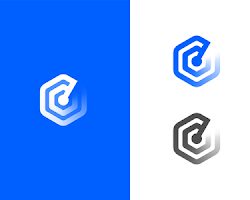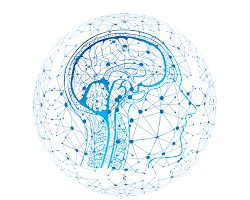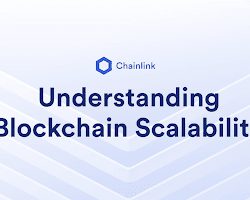Top 10 Benefits Of Combining AI And Blockchain Technology
Artificial Intelligence (AI) refers to the simulation of human intelligence in machines that are programmed to think and learn like humans. It is a multidisciplinary field of computer science that involves developing intelligent machines capable of performing tasks that typically require human intelligence. AI systems aim to mimic cognitive functions such as problem-solving, reasoning, learning, perception, and decision-making.
AI can be broadly categorized into two types: Narrow AI and General AI. Narrow AI, also known as weak AI, is designed to perform specific tasks within a limited domain. Examples include speech recognition, image classification, virtual assistants, recommendation systems, and autonomous vehicles. Narrow AI systems excel at their specific tasks but lack the ability to generalize their knowledge to new domains.
On the other hand, General AI, also known as strong AI or artificial general intelligence (AGI), refers to AI systems that possess the ability to understand, learn, and apply knowledge across a wide range of tasks and domains, similar to human intelligence. General AI is still largely theoretical and does not exist in practical applications at present. Achieving General AI is a complex and ambitious goal that involves developing machines that possess consciousness, self-awareness, and the ability to understand and experience emotions.
The field of AI encompasses various subfields and techniques, including machine learning, natural language processing (NLP), computer vision, robotics, expert systems, and neural networks. Machine learning, a subset of AI, plays a crucial role in enabling machines to learn from data without explicit programming. It involves the development of algorithms and models that can recognize patterns and make predictions or decisions based on the data they are exposed to. Deep learning, a subfield of machine learning, focuses on building artificial neural networks with multiple layers that can learn and extract complex features from data.
Natural language processing (NLP) is another key aspect of AI that deals with the interaction between computers and human language. It involves tasks such as speech recognition, language translation, sentiment analysis, and text generation. NLP enables machines to understand, interpret, and generate human language, facilitating communication and interaction between humans and machines.
Computer vision is concerned with enabling machines to understand and interpret visual information, similar to how humans perceive and process visual data. It involves tasks such as image recognition, object detection, facial recognition, and scene understanding. Computer vision finds applications in various fields, including self-driving cars, surveillance systems, and medical imaging.
Robotics is an interdisciplinary field that combines AI with mechanical engineering, electronics, and other areas to develop intelligent machines capable of interacting with their physical environment. Robots can perform tasks ranging from industrial automation to healthcare assistance and exploration of hazardous environments.
Ethics and responsible development of AI are increasingly important considerations. As AI systems become more advanced and autonomous, there is a need to address issues related to privacy, security, bias, transparency, and accountability. Researchers and policymakers are actively working on establishing ethical guidelines and regulations to ensure that AI technologies are developed and deployed in a manner that benefits society as a whole.
In summary, AI is a field of computer science that focuses on creating intelligent machines capable of performing tasks that typically require human intelligence. It encompasses various subfields, including machine learning, natural language processing, computer vision, and robotics. While Narrow AI systems are prevalent today, General AI, which possesses human-like intelligence, remains a theoretical concept. AI has the potential to revolutionize numerous industries and enhance our daily lives, but it also poses challenges and necessitates ethical considerations for responsible development and deployment.
Blockchain is a decentralized and distributed digital ledger technology that enables the secure and transparent recording of transactions across multiple computers or nodes. It was originally introduced in 2008 as the underlying technology behind the cryptocurrency Bitcoin by an anonymous person or group known as Satoshi Nakamoto. However, its potential applications extend far beyond cryptocurrencies and have sparked significant interest across various industries.
At its core, a blockchain is a continuously growing chain of blocks, where each block contains a list of transactions. These transactions are grouped together, timestamped, and cryptographically linked to the previous block, forming a chain of blocks. This cryptographic linking, known as a hash, ensures the integrity and immutability of the data stored in the blockchain. Once a block is added to the chain, it becomes extremely difficult to alter or remove the information within it without the consensus of the network participants.
One of the key features of blockchain is its decentralized nature. Traditional centralized systems rely on a central authority, such as a bank or government, to validate and record transactions. In contrast, blockchain operates on a peer-to-peer network, where each participant, or node, has a copy of the entire blockchain. Transactions are verified by consensus among the network participants through a consensus mechanism, such as Proof of Work (PoW) or Proof of Stake (PoS).
The decentralized and distributed nature of blockchain provides several benefits. First, it enhances security and tamper resistance. Since the data is distributed across multiple nodes, it becomes extremely difficult for a malicious actor to alter or manipulate the information stored in the blockchain. Additionally, the use of cryptographic algorithms ensures that transactions are secure and that the identity of the participants can be protected.
Another key characteristic of blockchain is transparency. All transactions recorded in the blockchain are visible to the network participants. This transparency promotes trust and accountability, as anyone can audit and verify the transactions. However, it’s important to note that while the content of the transactions is transparent, the identity of the participants can remain pseudonymous or anonymous, depending on the specific blockchain implementation.
Blockchain technology has the potential to disrupt various industries and enable new applications beyond cryptocurrencies. Some notable applications of blockchain include:
1. Financial Services: Blockchain can revolutionize traditional financial systems by providing faster, more secure, and cost-effective cross-border transactions, as well as enabling the development of decentralized digital currencies and programmable digital assets.
2. Supply Chain Management: Blockchain can enhance traceability, transparency, and efficiency in supply chains by recording the movement of goods, verifying their authenticity, and tracking their origins. This can help prevent fraud, counterfeiting, and ensure ethical sourcing.
3. Healthcare: Blockchain can improve the interoperability, security, and privacy of health records, enabling secure sharing of patient data across healthcare providers, reducing administrative overhead, and enhancing data integrity.
4. Identity Management: Blockchain can provide a decentralized and secure solution for managing digital identities, allowing individuals to have control over their personal information and streamline identity verification processes.
5. Smart Contracts: Blockchain can facilitate the execution of self-executing and self-enforcing contracts, known as smart contracts. Smart contracts automate the fulfillment of predefined conditions, eliminating the need for intermediaries and reducing the risk of fraud.
Despite its potential, blockchain technology also faces challenges. Scalability, energy consumption (in the case of PoW consensus mechanisms), regulatory frameworks, and the interoperability between different blockchain networks are among the issues that need to be addressed for widespread adoption.
In conclusion, blockchain is a decentralized and distributed digital ledger technology that enables secure and transparent recording of transactions. It offers benefits such as enhanced security, transparency, and tamper resistance. Blockchain has the potential to transform industries and enable new applications beyond cryptocurrencies, although challenges still need to be overcome for its widespread adoption.
Also read: What Are The Benefits Of AI And Blockchain Technology In Agricultural?
Top 10 Benifits of Combining AI and Blockchain Technology
Artificial intelligence (AI) and blockchain technology are two of the most disruptive technologies of our time. When combined, they have the potential to create even more powerful and transformative solutions.
Here are 10 of the top benefits of combining AI and blockchain technology:
- Increased security. Blockchain is a secure and tamper-proof way to store data. AI can be used to analyze this data and identify potential threats. For example, AI can be used to monitor blockchain networks for suspicious activity, such as fraudulent transactions or attempts to hack into the network.

- Improved efficiency. AI can be used to automate tasks and processes, which can free up human workers to focus on more strategic and creative work. Blockchain can be used to track and manage data and transactions, which can help to improve efficiency and reduce costs.
- Enhanced transparency. Blockchain is a transparent and immutable ledger that records all transactions. This makes it possible to track and trace transactions, which can help to increase transparency and accountability. AI can be used to analyze this data and identify patterns and trends.

- New business opportunities. The combination of AI and blockchain technology can create new business opportunities in a variety of industries. For example, AI and blockchain can be used to create more efficient and secure supply chains, develop new financial products and services, and improve healthcare and education.
- Improved decision-making. AI can be used to analyze large amounts of data and identify patterns and trends. This information can be used to make better decisions about business operations, investments, and marketing campaigns. Blockchain can be used to store this data securely and ensure that it is accurate and up-to-date.

- Personalized experiences. AI can be used to personalize products and services for each individual user. This can be done by analyzing data about the user’s preferences, interests, and behavior. Blockchain can be used to store this data securely and ensure that it is not shared with third parties.
- Reduced costs. AI can be used to automate tasks and processes, which can help to reduce costs. Blockchain can be used to track and manage data and transactions, which can also help to reduce costs. For example, blockchain can be used to reduce the cost of processing payments and clearing transactions.

- Improved governance. Blockchain can be used to create a more transparent and accountable system of governance. This can be done by recording all transactions on a public ledger and making it possible for anyone to view the data. AI can be used to analyze this data and identify potential problems or areas for improvement.
- Increased scalability. Blockchain is a scalable technology that can handle a large number of transactions. AI can be used to process these transactions more efficiently and securely. For example, AI can be used to identify and verify transactions, or to manage smart contracts.

- New applications. The combination of AI and blockchain technology can create new applications that have not yet been imagined. For example, AI and blockchain could be used to create a self-driving car that is completely secure and transparent.
These are just a few of the many benefits of combining AI and blockchain technology. As these technologies continue to develop, we can expect to see even more innovative and transformative applications emerge.
These are just a few examples of the many companies that are exploring the potential of AI and blockchain technology. As these technologies continue to mature, we can expect to see even more widespread adoption in the years to come.
Relation between AI and Blockchain
The relationship between Artificial Intelligence (AI) and Blockchain is an emerging field with significant potential for synergy and mutual reinforcement. While AI focuses on simulating human intelligence in machines, blockchain provides a decentralized and secure platform for transparently recording and verifying transactions. When combined, these technologies can create new opportunities and address existing challenges in various domains. Here are some key aspects of the relationship between AI and blockchain:
1. Enhanced Data Privacy and Security: Blockchain’s decentralized nature and cryptographic techniques can provide a secure and tamper-proof environment for storing sensitive data used in AI systems. This is particularly relevant in scenarios where privacy is crucial, such as healthcare or financial applications. By leveraging blockchain’s immutable and auditable nature, AI systems can access and analyze data stored on the blockchain while maintaining data integrity and privacy.
2. Trusted Data Sharing and Collaboration: Blockchain can facilitate the secure sharing and collaboration of data among multiple parties. AI systems heavily rely on high-quality and diverse data to train and improve their models. Blockchain enables data owners to retain control over their data while allowing secure and auditable data sharing with AI developers and researchers. Smart contracts on the blockchain can establish transparent and automated agreements for data sharing, ensuring fair compensation and data usage rights.
3. Data Marketplace and Monetization: The combination of AI and blockchain can enable the creation of decentralized data marketplaces. Data owners can securely sell or license their data on the blockchain, while AI developers can access diverse datasets for training their models. Blockchain-based mechanisms, such as tokenization and smart contracts, can facilitate transparent transactions and fair compensation for data providers.
4. AI Oracles and Data Verification: AI oracles act as bridges between the off-chain AI systems and the on-chain blockchain networks. They provide trusted and verified data from external sources to smart contracts and decentralized applications (DApps). AI algorithms can be used within oracles to validate, analyze, and verify data integrity, ensuring the accuracy and reliability of off-chain data used by blockchain applications.
5. Consensus and Governance in AI Networks: Blockchain’s consensus mechanisms, such as Proof of Stake (PoS), can be leveraged to establish decentralized governance models in AI networks. AI models and algorithms can be collectively maintained and updated through decentralized decision-making processes, where stakeholders with tokens or voting rights participate in model selection, updates, and improvements. This can foster democratization and transparency in AI development.
6. AI-enabled Smart Contracts: AI technologies can enhance the functionality and intelligence of smart contracts on the blockchain. Smart contracts can be programmed with AI capabilities, allowing them to autonomously analyze and interpret data, make decisions, and adapt to changing conditions. This can enable more sophisticated and dynamic smart contract applications, such as automated negotiations, adaptive pricing, and personalized services.
7. Fraud Detection and Cybersecurity: AI algorithms can be utilized to enhance fraud detection and cybersecurity measures in blockchain systems. AI can analyze patterns and anomalies in blockchain transactions, detect fraudulent activities, and strengthen the security of digital wallets and cryptographic keys. Conversely, blockchain can provide transparency and auditability to AI systems, ensuring that their decision-making processes are traceable and accountable.
While the convergence of AI and blockchain offers promising opportunities, challenges remain. Scalability, energy efficiency, interoperability between different blockchain networks, and the need for robust AI training on decentralized data are among the key areas that require further research and development. Additionally, ethical considerations, such as bias and fairness in AI algorithms and privacy concerns in blockchain-based AI applications, should be addressed to ensure responsible and trustworthy deployment of these technologies.
In conclusion, the integration of AI and blockchain technologies can create synergies that enhance data privacy, security, trusted data sharing, decentralized governance, and intelligent automation. The combination of AI’s analytical capabilities with blockchain’s decentralized infrastructure opens up new possibilities for innovative applications in various industries, transforming the way data is accessed, shared, and monetized while maintaining security and transparency.
Future of combining AI and Blockchain
The future of combining AI and blockchain holds immense potential and is expected to drive transformative changes across various industries. Here are some key areas where the combination of AI and blockchain is likely to shape the future:
1. Decentralized AI Networks: The integration of AI and blockchain can lead to the development of decentralized AI networks, where AI models and algorithms are collectively maintained and trained by distributed nodes. These networks can leverage blockchain’s consensus mechanisms to ensure trust, transparency, and decentralized decision-making. Such networks could democratize AI development, enable open collaborations, and foster the creation of AI models that are more robust, secure, and reliable.
2. Secure and Private Data Sharing: Blockchain can provide a secure and transparent platform for sharing and monetizing data in a decentralized manner. AI algorithms can leverage the distributed nature of blockchain to access diverse datasets while ensuring data privacy and security. By combining techniques like homomorphic encryption and federated learning with blockchain, AI can perform computations on encrypted data without compromising privacy, enabling secure and collaborative data sharing for AI applications.
3. AI-Driven Smart Contracts and Automation: AI technologies can enhance the functionality of smart contracts on the blockchain. Smart contracts infused with AI capabilities can autonomously analyze and interpret data, adapt to changing conditions, and make intelligent decisions. This opens up possibilities for automated and intelligent transactions, such as automated negotiation, dynamic pricing, personalized services, and autonomous organizations powered by AI-driven smart contracts.
4. Trustworthy and Transparent AI: Blockchain’s immutability and auditability can address concerns around trust, fairness, and bias in AI systems. The transparent nature of blockchain enables the traceability and accountability of AI algorithms and decisions. By storing AI models and their training processes on the blockchain, it becomes possible to verify and validate the inputs, training data, and decisions made by AI systems, fostering trust and reducing bias in AI applications.
5. AI Oracles and Verified Data: AI oracles can act as trusted sources of off-chain data for smart contracts and decentralized applications. AI algorithms within oracles can analyze and verify the authenticity, accuracy, and quality of data before it is used on the blockchain. This ensures that the data used by blockchain applications is reliable and trustworthy, expanding the range of applications that can leverage external data sources securely.
6. Enhanced Cybersecurity: The combination of AI and blockchain can enhance cybersecurity measures. AI algorithms can analyze patterns and detect anomalies in blockchain transactions, identifying potential security threats or fraudulent activities. Blockchain, in turn, provides a secure infrastructure for storing cybersecurity-related information, such as threat intelligence, cryptographic keys, and identity verification, making it more resilient against cyberattacks.
7. AI-Enabled Personalization and User Experience: AI algorithms integrated with blockchain can leverage decentralized and verified user data to deliver personalized services and experiences. Blockchain ensures that user data is securely managed and controlled by individuals, while AI algorithms analyze the data to provide personalized recommendations, content, and services. This combination can enhance user experiences, optimize resource allocation, and drive customer satisfaction.
8. Ethical and Transparent AI Governance: The integration of AI and blockchain can facilitate transparent and decentralized governance of AI systems. Decisions regarding AI model selection, training data, and updates can be collectively made by stakeholders through blockchain-based voting mechanisms. This helps address concerns around bias, accountability, and responsible AI development, ensuring that AI technologies are developed and deployed in an ethical and transparent manner.
While the future of combining AI and blockchain holds significant promise, there are challenges to overcome. These include scalability, energy efficiency, interoperability between different blockchain networks, regulatory frameworks, and the need for specialized AI techniques tailored for decentralized and distributed environments. Overcoming these challenges will require ongoing research, collaboration between stakeholders, and the development of standards and best practices.
In conclusion, the future of combining AI and blockchain is expected to revolutionize various sectors by enabling secure and transparent data sharing, enhancing automation, fostering trust in AI systems, and empowering decentralized decision-making. The convergence of these technologies has the potential to drive innovation, improve efficiency, and unlock new opportunities for businesses and individuals alike.
Also read: The Future of Blockchain Technology and Value Traits
Stay informed with daily updates from Blockchain Magazine on Google News. Click here to follow us and mark as favorite: [Blockchain Magazine on Google News].
Get Blockchain Insights In Inbox
Stay ahead of the curve with expert analysis and market updates.
latest from tech
Disclaimer: Any post shared by a third-party agency are sponsored and Blockchain Magazine has no views on any such posts. The views and opinions expressed in this post are those of the clients and do not necessarily reflect the official policy or position of Blockchain Magazine. The information provided in this post is for informational purposes only and should not be considered as financial, investment, or professional advice. Blockchain Magazine does not endorse or promote any specific products, services, or companies mentioned in this posts. Readers are encouraged to conduct their own research and consult with a qualified professional before making any financial decisions.

 Bitcoin
Bitcoin  Ethereum
Ethereum  Tether
Tether  XRP
XRP  Solana
Solana  Dogecoin
Dogecoin  USDC
USDC  Lido Staked Ether
Lido Staked Ether  Cardano
Cardano  TRON
TRON  Avalanche
Avalanche  Toncoin
Toncoin  Wrapped stETH
Wrapped stETH  Chainlink
Chainlink  Shiba Inu
Shiba Inu  Wrapped Bitcoin
Wrapped Bitcoin  Sui
Sui  Stellar
Stellar  Hedera
Hedera  Polkadot
Polkadot  WETH
WETH  Hyperliquid
Hyperliquid  Bitcoin Cash
Bitcoin Cash  LEO Token
LEO Token  Uniswap
Uniswap  Pepe
Pepe  Litecoin
Litecoin  Wrapped eETH
Wrapped eETH  NEAR Protocol
NEAR Protocol  Ethena USDe
Ethena USDe  USDS
USDS  Internet Computer
Internet Computer  Aave
Aave  Aptos
Aptos  POL (ex-MATIC)
POL (ex-MATIC)  Cronos
Cronos  Mantle
Mantle  Ethereum Classic
Ethereum Classic  Render
Render  Monero
Monero  MANTRA
MANTRA  WhiteBIT Coin
WhiteBIT Coin  Bittensor
Bittensor  Dai
Dai  Artificial Superintelligence Alliance
Artificial Superintelligence Alliance  Virtuals Protocol
Virtuals Protocol  Arbitrum
Arbitrum 



